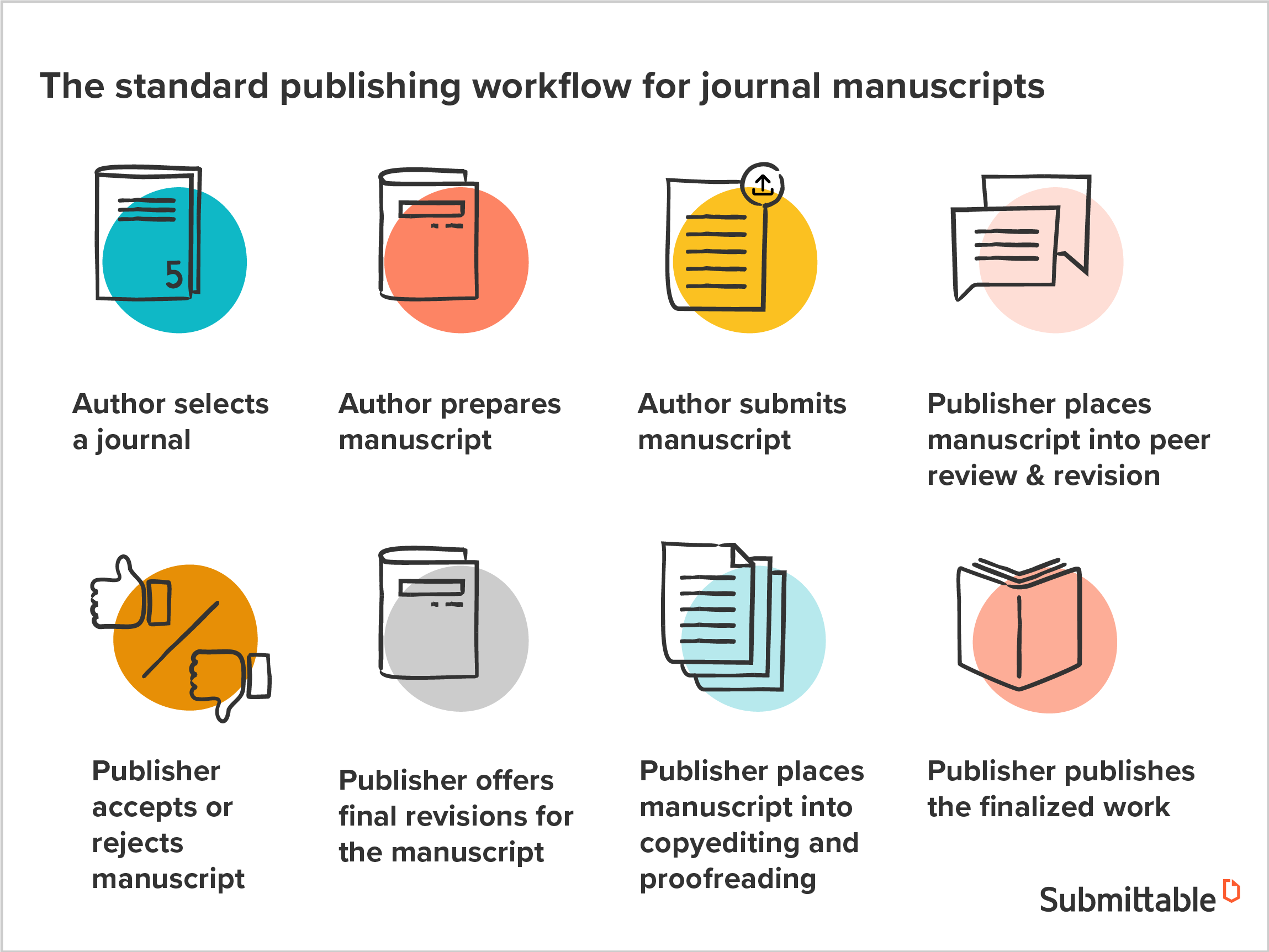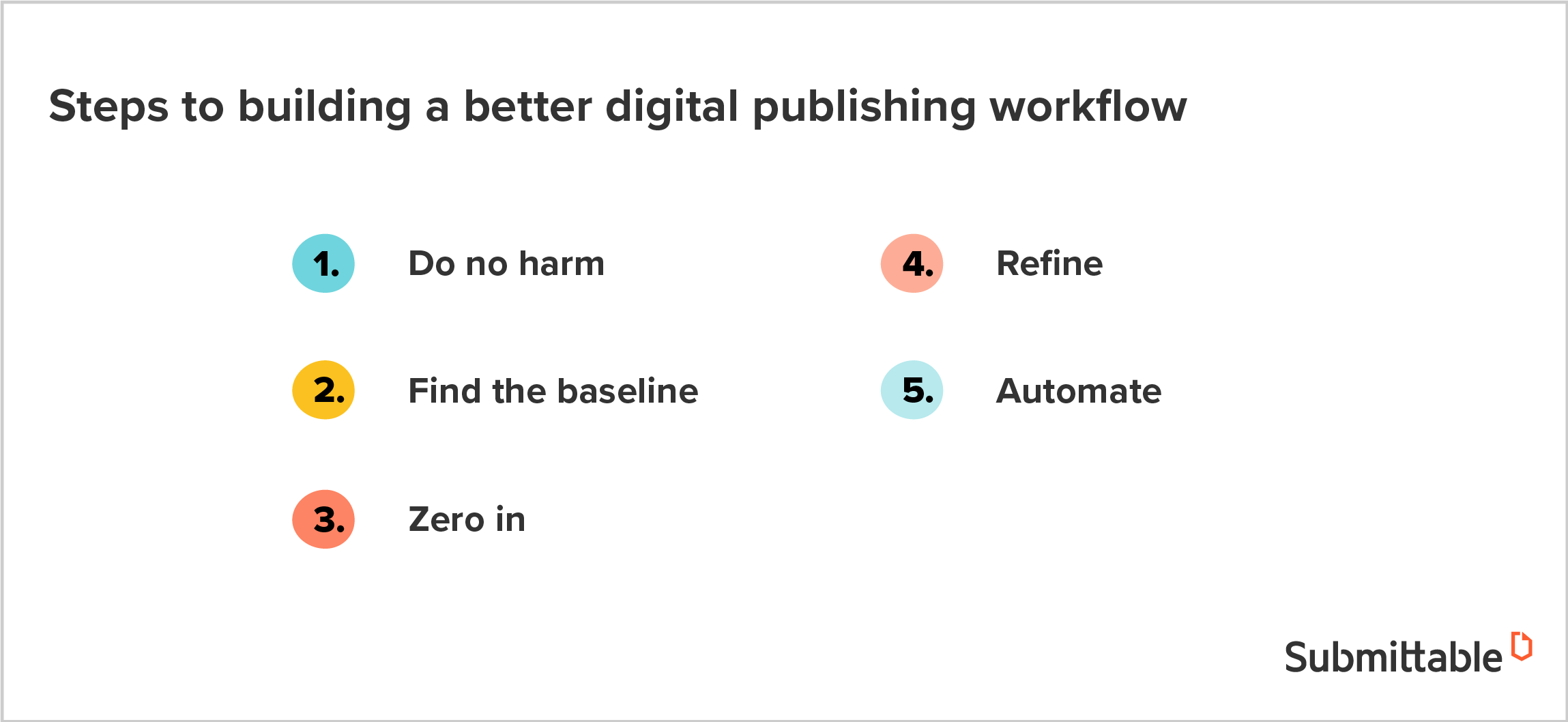Resilient.
There’s perhaps no more fitting adjective to describe modern publishers.
As publishers spring into action to address COVID-19 and its impact on an already-battered industry, many are also looking internally at how this new landscape demands changes in their publication processes.
As the terms of human contact have shifted, an emphasis on digital processes has only grown. Many publishers are embracing the moment and rethinking their digital publishing workflows to make them more efficient. Some are even building entirely new publishing workflows altogether. While some of these changes could be temporary to the pandemic, the need to change now may result in opportunities for long-term improvements, such as refining processes and making processes remote to save time and money while reducing risk
Publishers are now figuring out ways to refine every single action that needs to be carried out to move a piece of content from the idea phase to publication. That’s the major task at hand when it comes to building stronger digital publishing workflows.
Here’s a look at how some publishers are thinking about refining digital publishing workflows and what tools and strategies they’re using to get the job done.
The basics of a strong digital publishing workflow

Ian Atkins isn’t your average digital publisher.
Before becoming the COO and Co-founder of Choosing Therapy, a mental and behavioral health startup, Mr. Atkins was the Senior Financial Analyst and General Manager of Finance for Fit Small Business, an online publishing site.
Most of the content that Ian deals with these days focuses on mental wellness and therapy practitioners, but he hasn’t forgotten about his years spent managing a sizable editorial team of writers and editors scattered across the US.
For Mr. Atkins, “a strong digital publishing workflow needs to streamline each step down to its essence and ensure transparency so that all team members understand why decisions are being made.”
He insists that individuals within the publishing workflow should be empowered to understand the reasoning behind key details such as titles, link strategy, and references.
As much as possible, Mr. Atkins encourages publishers to embrace pre-built templates and standardized formulas which “make it easier for content creators to leverage their expertise into high-quality deliverables with reader and company objectives in mind.”
In other words, a little more process yields a lot more creativity and better results.
For Atkins, the goal is simple, “The best digital publishing workflow processes don’t require double and triple checks along the way,” he says.
The consensus seems to be that a great digital publishing workflow gets out of its own way and moves content along a pipeline expediently while also ensuring quality.
Here are some specifics on how to get that done from Atkins and other experts sharing best practices in the realm of digital publishing workflows.
How to prepare for a new digital publishing workflow

Do no harm
If there are aspects of your existing digital publishing workflow that work well, don’t touch them.
The exception might be aspects of the workflow that are deeply entangled with other parts you wish to change, but you can consider those on a case-by-case basis.
The key here is starting your analysis from the current strengths of your digital publishing workflow as it currently stands and then building out from there. You’ll get to the weaknesses you’re looking to improve soon enough, but try to hang onto those strengths as you build a better publishing workflow.
For example, if you have a strong cohort of peer reviewers that consistently produce excellent reviews—there may not be a need to shake up that aspect of your publishing workflow. There may, however, be other tweaks you could implement around your peer review process to enrich that and other aspects of the workflow.
Your team will thank you for starting from an asset-focused lens.
Find the baseline
Speaking of your team, start with their opinions about the workflow.
The best way to find the baseline is to ask them what needs fixing. After you’ve identified the parts of the workflow that should remain and those that need an upgrade, you can begin to map out an overall plan for building a better digital publishing workflow.
Make sure your baseline assessment of your publishing workflow is grounded in data. This could involve metrics such as time from ideation to publication, revenue, or even sustainability impacts. Whatever you choose, ensure that you’re assessing on the bases you wish to solve for as you develop new workflows.
Zero in
This is where you get specific.
Which aspects of the digital publishing workflow are giving your team trouble? Is it the creation of design assets? The last-mile step of publishing? Perhaps a snag in the editing phases?
Whatever the challenges may be, you’ll want to dive into each and solve the micro-problems within each as part of a larger overhaul of the broader workflow.
This may mean really rolling up your sleeves and digging in with editors to streamline the revision process. Or convening your team of peer reviewers to determine how to improve the acceptance/rejection stage.
Be sure to map out these smaller challenges as you go so you can track progress on their resolution while still keeping an eye on the bigger picture of the overall workflow changes.
Refine
Once you’ve mapped out all of those challenges—along with potential solutions—it’s time to execute.
Take what you’ve learned from your research, what other publishers are doing, what your team has recommended in terms of changes and begin to adjust specific aspects of the workflow.
One example might be how various internal systems do or do not integrate with one another. How is your editorial team collaborating with your design team? What are the bottlenecks, if any?
Here you are in solve mode. The trick is fitting all of the puzzle pieces together as you make small changes here and there that alter the complexion of the entire workflow.
To execute such changes, don’t be afraid to employ some good old-fashioned trial and error. Test different approaches while keeping an eye on key business metrics to see which workflows are producing better results. Keep checking in with team members at various stages of the publishing workflow to ensure high levels of comfort and skill with regard to the changes.
Once you’ve got a good handle with an overall new and effective process, lock it in. But don’t forget to keep those digital workflows flexible enough to embrace future changes down the road.
Automate
Let the technology enhance your digital publishing workflow rather than slow it down.
Keep clear sight of the goals you wish to achieve through a revised publishing workflow with technology being one means for reaching those goals.
Figure out the simple, repeatable steps within the digital publishing workflow that can be automated. Whether it’s communication with stakeholders, approvals, or even some basic editing—there’s likely a great deal that can be streamlined with the right submission management software.
How to refine your digital publishing workflow with software
The competitive advantage is abundantly clear.
Today’s publishers are embracing modern software that helps them build strong digital publishing workflows. Such platforms represent an overwhelming competitive advantage.
With digital publishing workflow software, publishers can more easily map out their publication schedules and ensure timelines are adhered to, all from one centralized hub. No more guesswork about the status of a piece of content. No more lost manuscripts or emails.
Modern submission software also enhances communication by automating email notifications to relevant team members when they’re next up in the workflow as well as automating emails to contributors and submitters. There’s also the added benefit of storing all necessary files in one place for easy access.
On the back end, submission management software helps publishers collect and analyze data about digital publishing workflows that enhances their ability to make strategic decisions about what gets published and how.
With the right modern tools, a stronger and more efficient digital publishing workflow is available to publishers, ready out of the box to shake things up and shift their practice.
